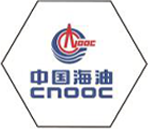
Oct . 17, 2024 12:18
Back to list
Transforming Energy Through Innovative Station Design and Efficiency Solutions
Understanding Reducing Stations A Vital Component in Modern Infrastructure
In the contemporary infrastructure landscape, the role of reducing stations cannot be overstated. These facilities are crucial in managing and regulating the flow of various utilities, including gases and fluids, particularly in the fields of energy and water supply. Reducing stations, also known as pressure-reducing stations, serve as the linchpin in ensuring that these resources are delivered efficiently and safely, accommodating the demands of both residential and industrial consumers.
What is a Reducing Station?
A reducing station is designed to control the pressure of gases or liquids in a pipeline system. Its primary function is to reduce the high pressure from a supply source—such as a natural gas pipeline or a water main—to a lower pressure that is suitable for downstream consumption. This process is vital because inadequate pressure regulation can lead to catastrophic failures, such as pipeline ruptures, and can compromise the safety of the end-users.
Typically, reducing stations are equipped with various components, including pressure regulators, control valves, and sometimes automated monitoring systems. The pressure regulators play a key role by adjusting the flow based on real-time data, allowing for a continuous and stable supply. Additionally, reducing stations may include safety features such as pressure relief valves, which automatically release excess pressure, ensuring that systems remain within safe operating limits.
Importance in Natural Gas Distribution
In natural gas distribution, reducing stations are particularly essential. Natural gas is transported through extensive pipeline networks at very high pressures to ensure efficiency during transit. However, end-users—whether residential homes or industrial facilities—require gas at much lower pressures. Without reducing stations, the high-pressure gas could not only damage appliances and equipment but also pose severe safety risks.
The operation of these stations is regulated and sophisticated. They utilize telemetry and other advanced monitoring technologies to ensure that pressure levels are maintained within specified limits. This not only guarantees safety but also ensures that consumers receive a consistent supply of gas, especially when demand fluctuates, such as during peak usage times in winter.
reducing station

Role in Water Supply Systems
Reducing stations are equally significant in water supply systems, where they help maintain the required water pressure for consumer needs. In urban water supply networks, water from treatment facilities is often stored in reservoirs and pumped through wide-ranging pipeline systems at varying pressures. A reducing station ensures that when this water reaches smaller distribution lines or households, the pressure is suitable for everyday use.
Moreover, maintaining the right pressure through reducing stations can prevent issues such as pipe bursts and leaks. Water that is delivered at excessively high pressures can cause damage to plumbing and infrastructure, leading to costly repairs and disruptions in service. By controlling the pressures at reducing stations, water utilities can enhance the reliability of their service and extend the lifespan of their infrastructure.
Future Developments
As technology advances, the future of reducing stations looks promising. Innovations such as remote monitoring and artificial intelligence are being integrated into these systems, allowing for more efficient management of resources. Smart monitoring systems can predict pressure fluctuations and adjust settings in real-time, optimizing performance and enhancing safety.
Moreover, with the growing emphasis on sustainability, reducing stations are also adapting to incorporate cleaner technologies. For instance, some are beginning to utilize renewable energy sources to power their operations, thereby reducing their carbon footprint. This shift not only aligns with global sustainability goals but also supports the economic viability of utility companies by lowering operational costs.
Conclusion
In conclusion, reducing stations are indispensable in modern infrastructure, playing a critical role in the safe and efficient distribution of vital resources such as natural gas and water. By managing pressure levels, these stations contribute not only to consumer safety but also to the overall integrity and sustainability of utility networks. As technology evolves, the capabilities of reducing stations will continue to improve, ensuring that they meet the ever-growing demands of our societies safely and efficiently. Through ongoing innovation and commitment to operational excellence, reducing stations will remain a fundamental aspect of our infrastructure for years to come.
Next:
Latest news
-
Safety Valve Spring-Loaded Design Overpressure ProtectionNewsJul.25,2025
-
Precision Voltage Regulator AC5 Accuracy Grade PerformanceNewsJul.25,2025
-
Natural Gas Pressure Regulating Skid Industrial Pipeline ApplicationsNewsJul.25,2025
-
Natural Gas Filter Stainless Steel Mesh Element DesignNewsJul.25,2025
-
Gas Pressure Regulator Valve Direct-Acting Spring-Loaded DesignNewsJul.25,2025
-
Decompression Equipment Multi-Stage Heat Exchange System DesignNewsJul.25,2025

